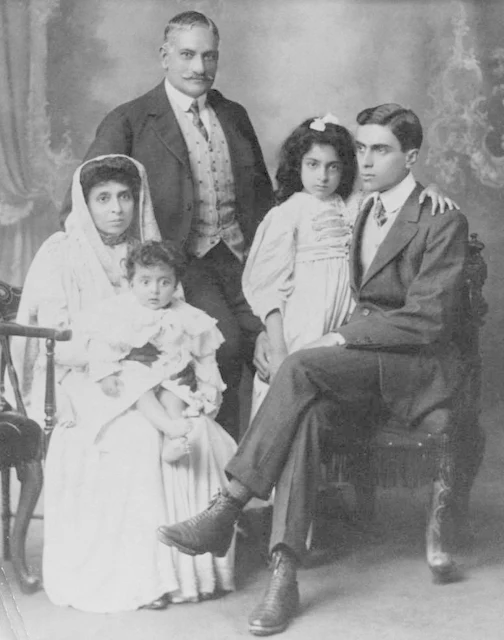Pandit Jawahar Lal Nehru 43 Magical Photos
Pandit Jawaharlal Nehru ; 14 November 1889 – 27 May 1964) was an Indian anti-colonial nationalist, secular humanist, social democrat[2] and author who was a central figure in India during the middle of the 20th century. Nehru was a principal leader of the Indian nationalist movement in the 1930s and 1940s. Upon India's independence in 1947, he served as the country's prime minister for 16 years. Nehru promoted parliamentary democracy, secularism, and science and technology during the 1950s, powerfully influencing India's arc as a modern nation. In international affairs, he steered India clear of the two blocs of the Cold War. A well-regarded author, his books written in prison, such as Letters from a Father to His Daughter (1929), An Autobiography (1936) and The Discovery of India (1946), have been read around the world. During his lifetime, the honorific Pandit was commonly applied before his name in India and even today too.
The son of Motilal Nehru, a prominent lawyer and Indian nationalist, Jawaharlal Nehru was educated in England—at Harrow School and Trinity College, Cambridge, and trained in the law at the Inner Temple. He became a barrister, returned to India, enrolled at the Allahabad High Court and gradually began to take an interest in national politics, which eventually became a full-time occupation. He joined the Indian National Congress, rose to become the leader of a progressive faction during the 1920s, and eventually of the Congress, receiving the support of Mahatma Gandhi who was to designate Nehru as his political heir. As Congress president in 1929, Nehru called for complete independence from the British Raj. Nehru and the Congress dominated Indian politics during the 1930s. Nehru promoted the idea of the secular nation-state in the 1937 Indian provincial elections, allowing the Congress to sweep the elections, and to form governments in several provinces. In September 1939, the Congress ministries resigned to protest Viceroy Lord Linlithgow's decision to join the war without consulting them. After the All India Congress Committee's Quit India Resolution of 8 August 1942, senior Congress leaders were imprisoned and for a time the organisation was crushed. Nehru, who had reluctantly heeded Gandhi's call for immediate independence, and had desired instead to support the Allied war effort during World War II, came out of a lengthy prison term to a much altered political landscape. The Muslim League, under Muhammad Ali Jinnah, had come to dominate Muslim politics in the interim. In the 1946 provincial elections, Congress won the elections but the League won all the seats reserved for Muslims, which the British interpreted to be a clear mandate for Pakistan in some form. Nehru became the interim prime minister of India in September 1946, with the League joining his government with some hesitancy in October 1946
,%20Vijaya%20Lakshmi%20(b.%20August%201900)%20and%20Jawaharlal.jpg)
Swarup Rani and Motilal Nehru in England with their children from l. to r. Krishna (b. November 1907), Vijaya Lakshmi (b. August 1900) and Jawaharlal
Queen Elizabeth II with Nehru and other Commonwealth leaders, taken at the 1960 Commonwealth Conference, Windsor Castle
Prime Minister Nehru with Edwina Mountbatten in 1951
Nehru_at_Harrow
Nehru, President-elect of the Lahore session of the Indian National Congress in 1929, with the outgoing President, his father Motilal
Nehru's study in Teen Murti Bhavan, which is now converted into a museum
Nehru's room at Ahmednagar fort where he was incarcerated from 1942 to 1945, and where he wrote The Discovery of India
Nehru with the Seva Dal volunteer corps in Allahabad, 1940
Nehru with schoolchildren at the Durgapur Steel Plant. Durgapur, Rourkela and Bhilai were three integrated steel plants set up under India's Second Five-Year Plan in the late 1950s
Nehru with John F. Kennedy at the White House, 7 November 1961
Nehru with Indonesian president Sukarno in Jakarta in 1950
Nehru with Indian Nobel-prize-winning poet Rabindranath Tagore in 1936
Nehru with Gamal Abdel Nasser and Josip Broz Tito in Belgrade, Yugoslavia, 1961
Nehru with Albert Einstein in Princeton, New Jersey, 1949
Nehru visiting an Indian soldier recovering from injuries at the Brigade Headquarters Military Hospital in Srinagar, Kashmir
Nehru signing the Indian Constitution c.1950
Nehru receiving US President Dwight D. Eisenhower at Parliament House, 1959
Nehru playing with a tiger cub at his home in 1955
Nehru on a visit to Egypt in June 1938
Nehru on a 1989 USSR commemorative stamp
Nehru meeting with Chancellor Konrad Adenauer and Deutsche Bank chairman Hermann Josef Abs during a state visit to West Germany in June 1956
Nehru inspecting the troops on a visit to the Srinagar Brigade Headquarters Military Hospital, April 1948
Nehru in Karachi after returning from Lausanne, Switzerland with the ashes of his wife Kamla Nehru in March 1936
Nehru in a procession at Peshawar, North-West Frontier Province, 14 October 1937
Nehru in 1919 with wife Kamala and daughter Indira
Nehru during the construction of the Bhakra Dam in the Punjab, 1953
Nehru at an antibiotics manufacturing facility, Poona, 1956
Nehru as the main campaigner of the Indian National Congress, 1951–52 elections
Nehru and the Congress party members of his interim government after being sworn in by the Viceroy, Lord Wavell, 2 September 1946
Nehru and Mao Zedong in Beijing, China, October 1954
Nehru and Mahatma Gandhi in 1929
Nehru and Kamala Kaul at their wedding in Delhi, 1916
Map showing disputed territories of India
Lord Mountbatten swears in Nehru as the first Prime Minister of independent India on 15 August 1947
Jawaharlal Nehru, Barrister-at-Law
Jawaharlal Nehru hands out sweets to students at Nongpoh in Meghalaya
Indira Gandhi, Nehru, Rajiv Gandhi and Sanjay Gandhi in June 1949
Indian 5 rupees coin, commemorating the birth centenary of Nehru in 1989
Gandhi, Nehru, and Khan Abdul Ghaffar Khan at the Congress Working Committee meeting in Wardha in September 1939
Gandhi and Nehru during the drafting of Quit India Resolution in Bombay, August 1942,
Bust of Nehru at Aldwych, London
No comments:
Post a Comment